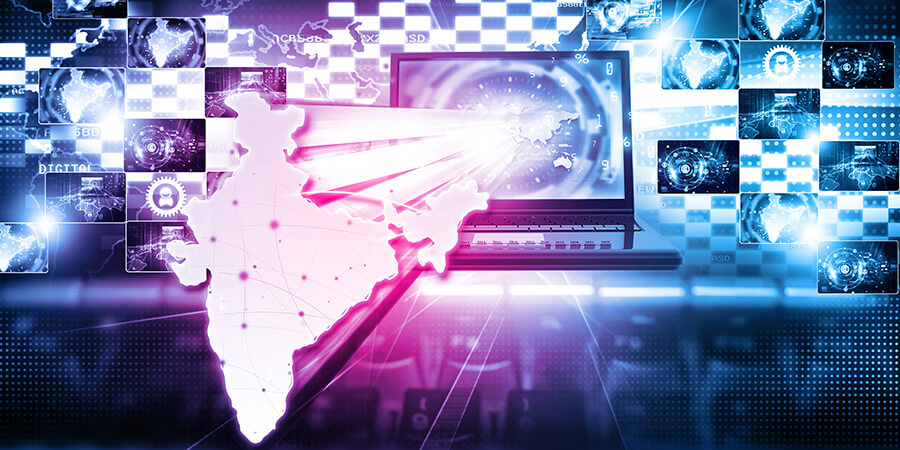Internet adoption in many countries has steadily increased over the past few years. The internet is now a necessity in modern times, as internet access and digital skills can improve someone's vocation prospects, communication access and overall quality of life.
Indeed, the internet makes it easier to communicate with friends and family, regardless of location and demographics. From video call channels to social media platforms, most everyone can seamlessly connect more readily than ever before. For people who are not physically near each other or those who have family in other countries, the internet provides that needed bridge.
Despite its widespread adoption, however, a significant portion of the world's population remains unconnected to the internet. And those people with little or no internet access risk being excluded from the wide variety of useful services it provides, including the aforementioned communication as well as banking, health services, education, entertainment, jobs and government services. In many cases, gaining access to these services by other means is more difficult and more limited in choice.
Exclusion from internet access can also negatively impact a person's ability to earn a living, increase their wages and improve their way of life. While the causes and effects of such inaccessibility differ between countries and economies, the consequences can be remarkably similar.
The Status of Internet Connectivity in India
In 2020, DataReportal, a noted online reference library, highlighted the regions with the highest number of people not connected to the web. According to their findings, the majority of countries that reported lower rates of internet access were in Asia and Africa.
Among the ten countries listed, India had the highest number of disconnected people, despite having the second-largest online market worldwide. At the time of the report, 50% of the country's population had no access to the internet.
Additionally, Kepios, the renowned digital strategy consultant, gave analysis stating that internet users in India increased by 34 million between 2021 and 2022. However, though the majority of Indians had become active internet users — as referenced by the 658 million internet users in India in January 2022 — 742 million people in India remained unconnected to the internet at the beginning of 2022. This means that 53% of the population was still offline at the start of that year.
In another analysis made by the British-founded confederation Oxfam, titled “India Inequality Report 2022: Digital Divide,” researchers focused on the impact of the digital divide on inequality in India, specifically during the pandemic.
According to the report, the lack of access to Information and Communication Technologies (ICTs) was a key marker of the divide. The report stated that approximately 70% of the population has poor or no connectivity to digital services.
Government efforts such as BharatNet, which initially aimed to provide digital connectivity in rural India, have also fallen short of delivering effective results. Among the 20% poorest households in the country, only 8.9% have access to internet services, and only 2.7% have access to a computer itself.
With regards to online education, access to the internet through any kind of device was found to be better in the urban areas of India (44%) than its rural areas (17%). And concerningly, more than 80% of teachers in India reported difficulties in teaching online, citing issues such as data expense and limited connectivity. Two out of every five teachers reported not having access to the devices necessary in order to teach digitally.
In the matter of healthcare, the National Digital Health Mission (NDHM), also known as the Ayushman Bharat Digital Mission, was launched during the pandemic as a coordinated digital health ecosystem in India. However, due to the inadequate digital infrastructure and requisite digital literacy (for both the receivers and providers), successful implementation is still a long way off. With over 70% of the population in India having little or no connectivity to digital services, the digitization of healthcare hasn’t yet improved the public’s access to health services as originally intended.
India's digital journey, along with the ongoing challenges of digital democracy, provide us with essential lessons. Though the percentage of people with access to the internet has slightly increased, growth is still happening, regardless of size.
Meanwhile, some studies on the current state of India's internet reach claim a significant increase in the frequency and duration of such internet access.
There will be some trends that will ultimately shape the digital ecosystem over the next three years. "Around 87% of the Indian households will have an internet connection by 2025, and there will be a 21% rise in duration of internet access through mobile since 2019," according to a report titled Digital@2025.
Further, noted brand consultant Kantar Analytics added, "By 2025, more than half of the online shoppers will also buy products from social platforms, and half of the urban households will have at least one smart device in addition to the smartphone." With such optimistic predictions and through hard work and focus, India will continue to bridge its connectivity divide and bring the power of the internet to all its people.





